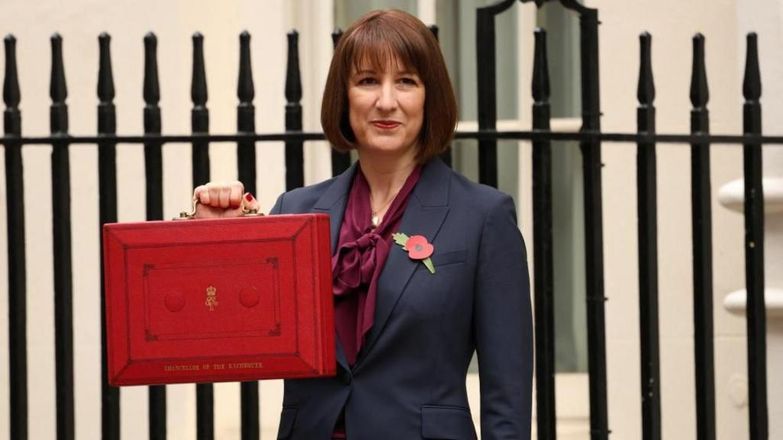How Today’s Budget and Possible Rate Cuts Could Shape the Property Market
Today’s budget has introduced some notable changes that will likely impact the UK property market, particularly affecting landlords, first-time buyers, and those looking to move up the ladder. Rightmove’s recent House Price Index (HPI), released shortly before the budget, highlighted strong market demand alongside increased housing stock, pointing to a mixed but potentially optimistic outlook. Additionally, with Bank Rate cuts on the horizon as a possibility, buyers may see some positive movement in borrowing costs, creating more opportunities in the coming months. Here’s a look at how these elements interact and what they mean for buyers and sellers alike.
1. Modest Price Growth and Rising Buyer Choice
According to Rightmove’s latest data, October saw only a 0.3% increase in new seller asking prices, a significant drop from the typical seasonal growth rate of 1.3%. This limited price rise is largely attributed to increased stock levels, giving buyers more options and placing pressure on sellers to price competitively. With today’s budget raising the stamp duty surcharge on second homes, we may see additional downward price pressure, as investors weigh the increased costs before making new acquisitions.
2. Higher Stamp Duty Surcharge on Additional Properties
A key element of the budget is the increase in the stamp duty surcharge for additional properties, raised from 2% to 5%. This new rate may deter some buy-to-let investors from expanding their portfolios, given the added expense of purchasing additional properties. Rightmove’s data already shows a trend of rental properties returning to the sales market, and this may intensify if landlords choose to reduce their portfolios. Fewer rental properties could drive rental prices higher, as supply becomes increasingly limited.
3. Upcoming End to First-Time Buyer Stamp Duty Relief
For first-time buyers, the budget confirms that the current stamp duty relief threshold of £425,000 will end in April 2025. Many may choose to act sooner rather than later to secure this relief while it’s still in place. Rightmove’s HPI report indicates that typical first-time buyer homes average around £226,868, suggesting a large segment could benefit by purchasing before the deadline. While the timing of a potential Bank Rate cut is still uncertain, such a move would help by reducing mortgage rates, making homeownership more affordable for first-time buyers.
4. Market Activity and the Impact of Possible Rate Cuts
Despite affordability pressures, Rightmove’s HPI shows a 29% increase in agreed sales year-on-year, with buyer demand up by 17%. This suggests a resilient market, though affordability remains a limiting factor. A Bank Rate cut could amplify buyer interest by lowering mortgage costs, potentially allowing more buyers to act. If rates do decrease, this would likely spur further activity, helping offset some of the affordability challenges that currently hold buyers back.
5. Inheritance Tax and Capital Gains Tax
The budget did not introduce major changes to Inheritance Tax (IHT) for residential properties, leaving the threshold at £325,000, with higher allowances available for direct descendants. Capital Gains Tax (CGT) on property also remains unchanged, at 18% for the basic rate and 24% for the higher rate, which may reassure some landlords and holiday homeowners considering their long-term plans. While stability in these areas may encourage current owners to hold onto properties, the increased stamp duty on new acquisitions could deter further expansion.
6. Affordable Housing Initiatives
An additional £500 million has been allocated to the Affordable Homes Programme, aiming to improve housing supply and address affordability challenges. This funding may help ease supply issues over time, although the impact on the market may not be immediate. For buyers and renters, increased affordable housing options could gradually alleviate competition, particularly in high-demand areas.
Conclusion: A Market with Potential Amid Change
This budget introduces a blend of tax adjustments and investment plans that will shape the property market, though with impacts varying across buyer types. For landlords, the higher stamp duty surcharge is likely to increase acquisition costs, potentially tightening rental supply and raising rents. First-time buyers may find it advantageous to act before the end of stamp duty relief, while possible Bank Rate cuts could improve affordability by making borrowing more affordable.
We’ll continue to monitor these developments closely, as they could signal positive momentum for the property market as we end the year and lead into 2025. With high buyer demand and an increase in available stock, both buyers and sellers have opportunities to navigate this evolving market and make informed decisions.


 By
By 



Share this with
Email
Facebook
Messenger
Twitter
Pinterest
LinkedIn
Copy this link